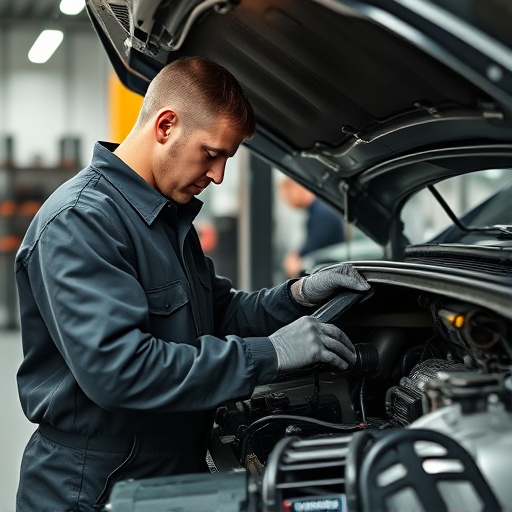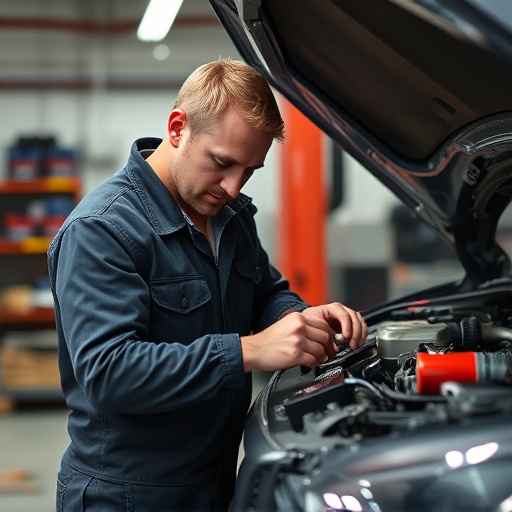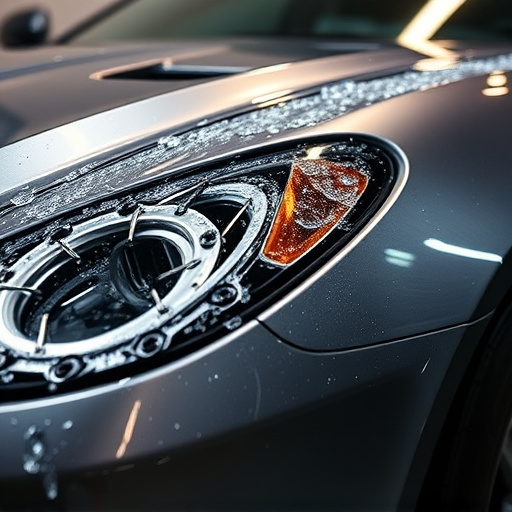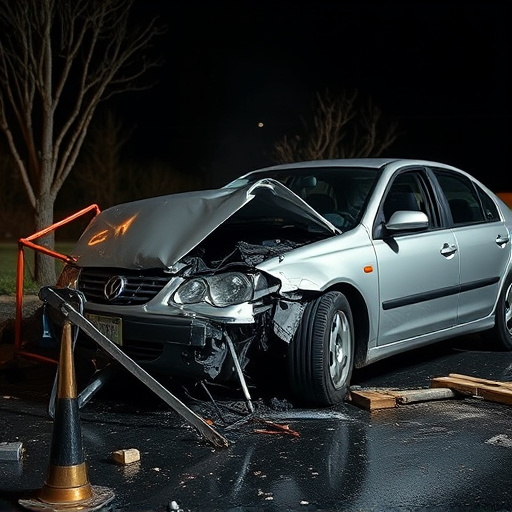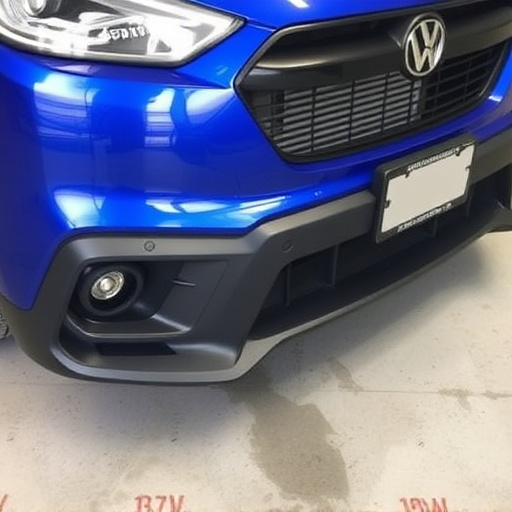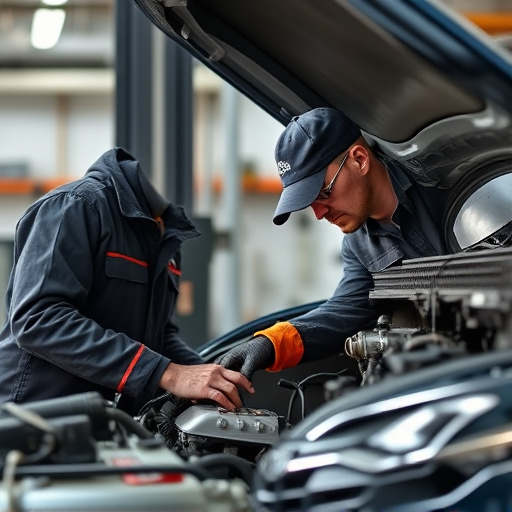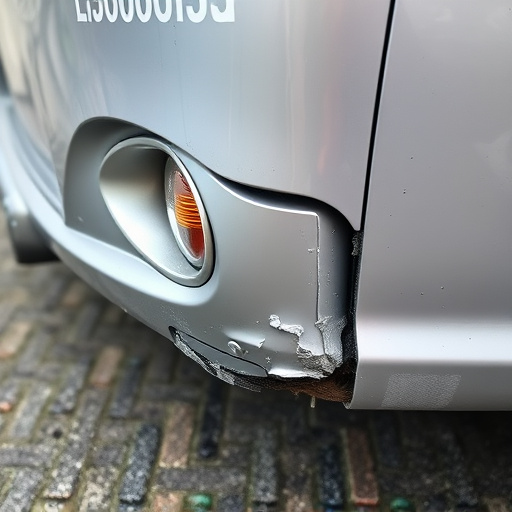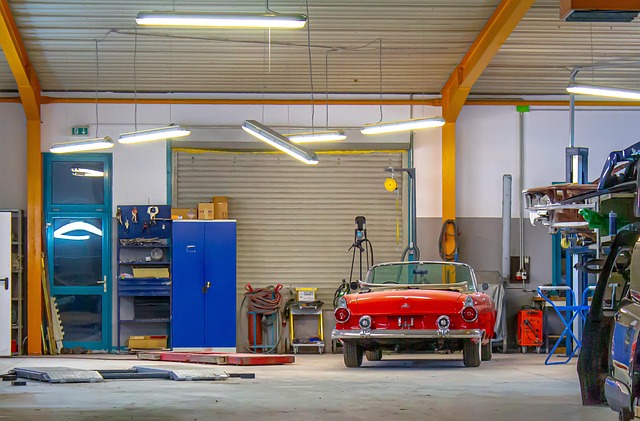Tesla major structural repair requires specialized attention due to complex engineering. After damage from road debris or other objects, owners should select a reputable auto body shop with expertise in undercarriage issues. The process involves thorough inspection, sourcing compatible parts, and meticulous multi-step repairs using advanced tools and techniques specific to Tesla's design for optimal safety and performance.
Tesla owners often pride themselves on their vehicles’ advanced technology, but even these electric marvels aren’t invulnerable. Serious damage to a Tesla’s undercarriage or lifting mechanisms can lead to significant structural issues. This comprehensive guide delves into the intricacies of diagnosing and repairing Tesla major structural repairs stemming from undercarriage or lift damage. From understanding common causes to executing step-by-step repair processes, this article equips you with knowledge to restore your Tesla’s functionality.
- Understanding Tesla Undercarriage Damage: Common Causes
- Assessment and Planning for Major Structural Repairs
- Restoring Functionality: Step-by-Step Repair Process
Understanding Tesla Undercarriage Damage: Common Causes
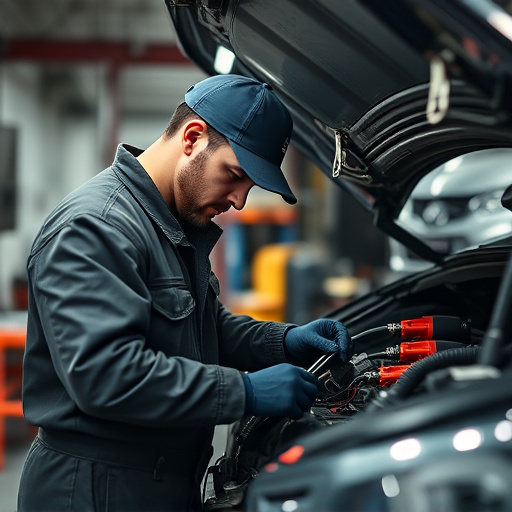
Tesla vehicles, renowned for their cutting-edge technology and sleek design, are not immune to undercarriage damage. Understanding the common causes of such issues is crucial when considering Tesla major structural repair. From road debris to potholes, everyday driving conditions can pose significant threats to the vehicle’s underbelly. Impact from hitting a curb or another object can cause severe damage, necessitating prompt action from a trusted auto body shop.
In the realm of fleet repair services, specialized attention is required for Tesla vehicles due to their intricate design and advanced engineering. Auto maintenance experts must possess the skills and tools to inspect and address undercarriage damage effectively. Whether it’s a simple fix or a complex structural repair, choosing a reputable auto body shop ensures your Tesla receives the highest level of care, maintaining its performance and safety standards.
Assessment and Planning for Major Structural Repairs
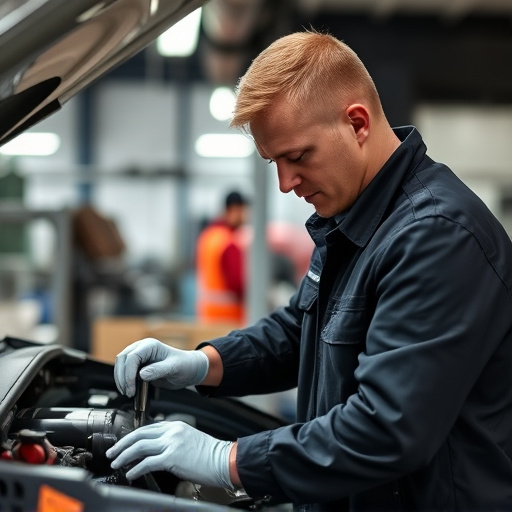
After sustaining undercarriage or lift damage, a Tesla owner might face the daunting task of assessing and planning for major structural repairs. The first step is to thoroughly inspect the vehicle, identifying all affected components. This includes examining the frame, suspension systems, drivetrain, and any other interconnected structures. A detailed assessment by a qualified technician from a reputable collision center or body shop services is crucial to pinpointing the extent of the damage.
Once the damage is accurately determined, planning for repairs can commence. The process involves sourcing compatible parts, especially if specialized or custom components are required. Many collision centers offer vehicle restoration services, ensuring that the Tesla not only returns to its pre-incident structural integrity but also maintains its unique design and performance characteristics.
Restoring Functionality: Step-by-Step Repair Process
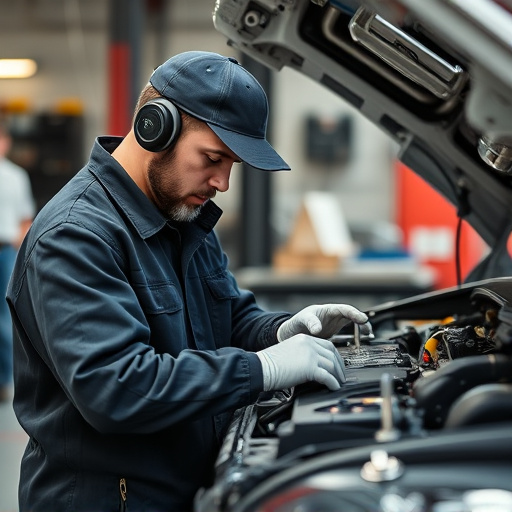
Restoring Functionality: Step-by-Step Repair Process for Tesla Major Structural Repairs
After a Tesla suffers undercarriage or lift damage, a meticulous approach is required to ensure both safety and optimal performance. The process begins with a thorough inspection to identify any structural weaknesses or discrepancies. Skilled technicians then employ advanced tools and techniques tailored to Tesla’s unique design, focusing on components like the chassis, suspension, and drivetrain.
Next, any damaged panels are carefully removed for assessment and replacement if necessary. This involves sophisticated dent removal methods and autobody repairs to match the vehicle’s precision engineering. Each step is crucial in aligning the car’s mechanics and aesthetics. Finally, rigorous testing ensures the restored Tesla meets safety standards and delivers a seamless driving experience, showcasing the expertise involved in these specialized vehicle collision repairs.
In light of the above, it’s clear that Tesla major structural repairs after undercarriage or lift damage require a systematic approach. By understanding common causes and assessing the extent of the damage, owners can effectively plan and execute repairs to restore their vehicle’s functionality. The step-by-step repair process detailed in this article serves as a comprehensive guide, ensuring that folks can confidently navigate this intricate task and get back on the road safely.
